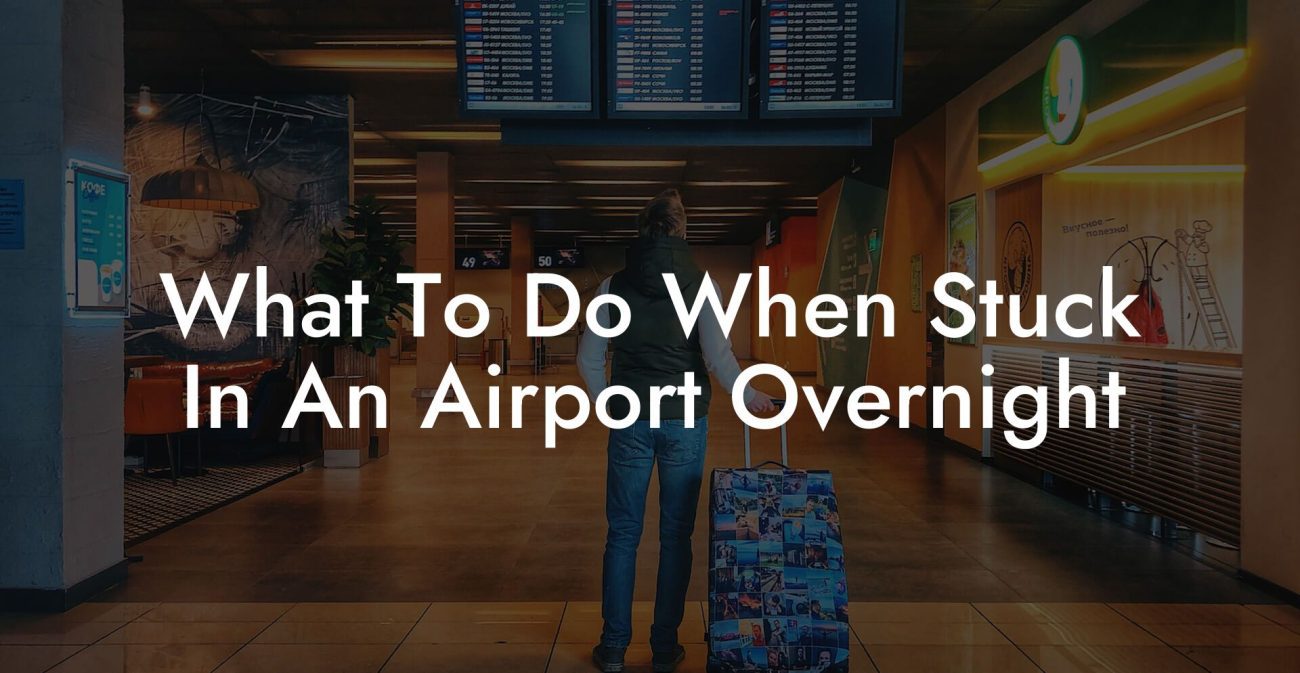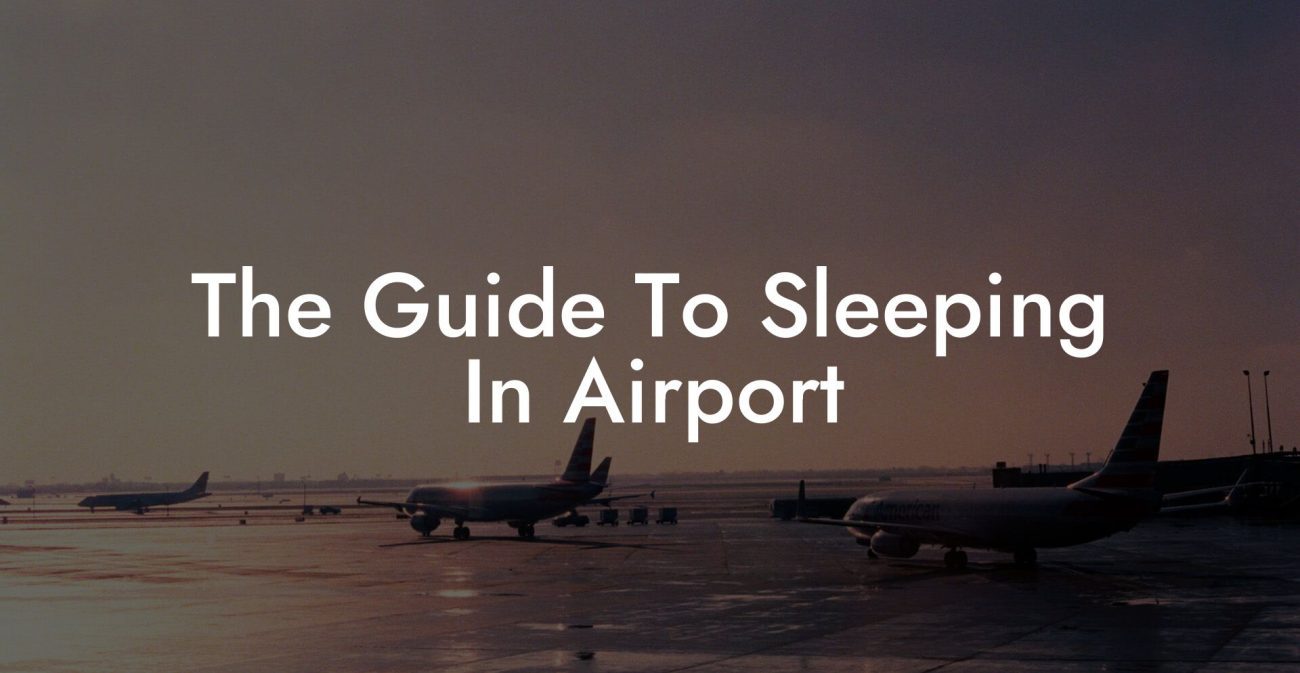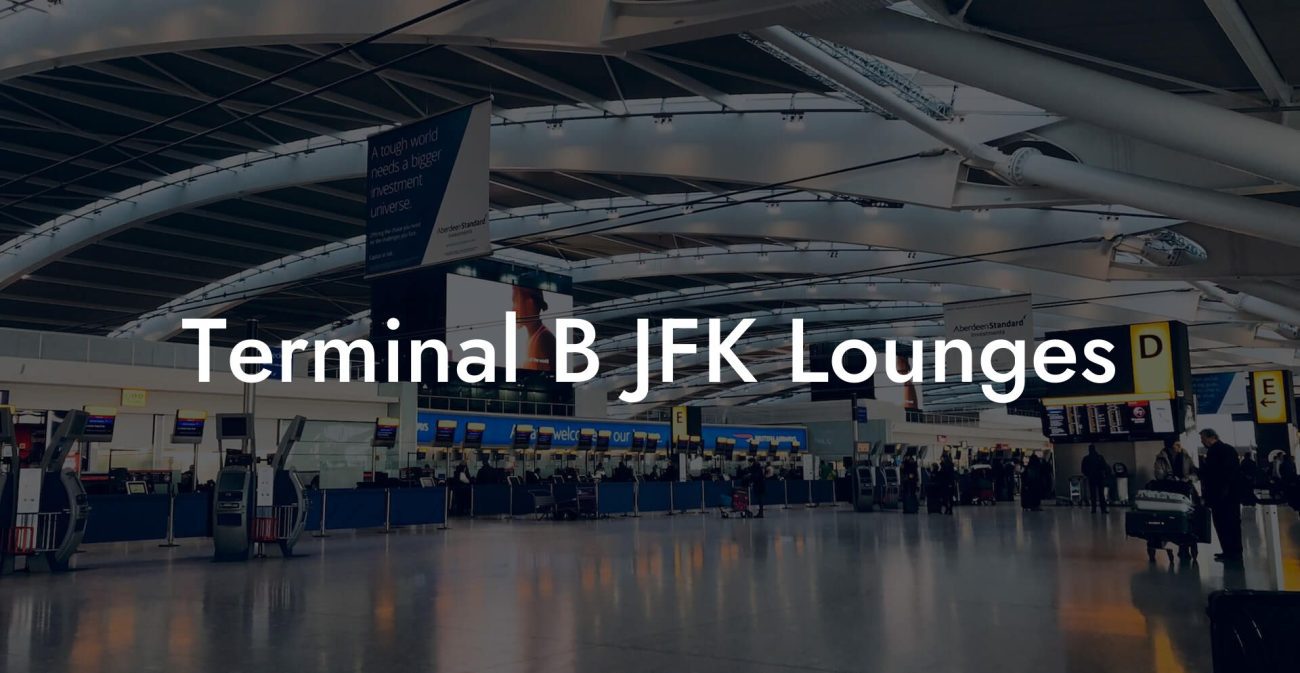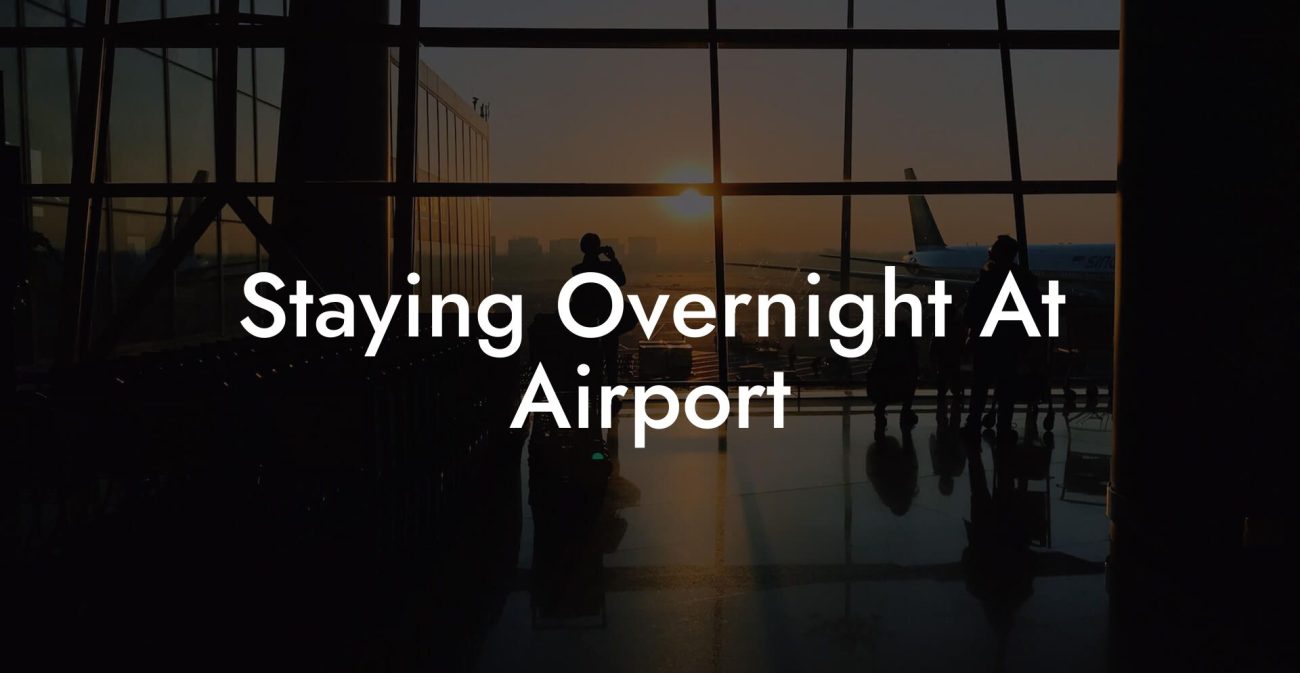Ever found yourself in the terminal at 2 a.m., drifting into a light sleep while the hum of airplane engines and midnight announcements whisper you into a makeshift slumber? Welcome to the quirky yet practical world of sleeping at the airport—a realm where travel mishaps, unexpected layovers, and last-minute cancellations turn into opportunities for a bit of rest (and maybe even some Instagram-worthy moments). Whether you’re a budget traveler, a stressed-out jetsetter, or simply someone who’s mastered the art of napping on a skinny chair, this guide is your go-to manual for transforming those cold, fluorescent-lit terminals into surprisingly comfortable sleep havens.
Quick Links to Useful Sections
- Welcome to the Terminal: Why Sleep at the Airport?
- airport sleeping pods and Lounge Alternatives: The New Age of Terminal Naps
- Unlocking the Secrets of Airport Sleeping Pods
- Alternatives to Pods: Lounges, Seats, and Secret Spots
- Maximizing Comfort: Essential Tips for Airport Slumber
- Prepare Your Personal Comfort Kit
- Cultivate a Zen Space Amid the Buzz
- Tech Tools and Apps for a Better Terminal Nap
- Crafting Your Ultimate Airport Sleeping Strategy
- Step 1: Do Your Homework
- Step 2: Timing Is Everything
- Step 3: Map Out Your Retreat
- Step 4: Layer Your Defenses
- Step 5: Stay Flexible and Adaptable
- Safety and Security: Keeping Your Snooze Secure
- Lock It Down
- Stay Aware
- Travel Insurance and Contact Info
- Buddy System
- Stories from the Terminal: Real-Life Sleeping at the Airport Experiences
- The Jetlagged Entrepreneur
- The Budget Traveler's Triumph
- The Unexpected Digital Detox
- Budget Travel and the Art of Terminal Napping: Saving Money and Staying Rested
- The Future of Airport Sleep: Trends and Innovations
- Resources and Community Support: Your Next Steps
- Online Forums and Social Media Groups
- Travel Blogs and YouTube Channels
- Airline and Airport Apps
- Local Traveler Meetups
- Sleeping at the Airport FAQs: Your Top Questions Answered
- Your Journey to a Comfy, Confident Airport Sleep Experience
Welcome to the Terminal: Why Sleep at the Airport?
In a world where delays, cancellations, and last-minute itinerary changes are more common than a free Wi-Fi hotspot, sleeping at the airport has become an art form. It’s not just about catching a few winks—it’s about transforming your travel misfortune into an opportunity, saving on accommodation costs, and even enjoying a bit of extra “me time” after an exhausting travel day.
For many Gen-Z and millennial adventurers, the airport is far more than just a transit point; it’s a social hub, a place for quirky selfies, and sometimes, an impromptu retreat. Sleeping at the airport isn’t a sign of defeat; it’s a savvy travel hack that offers security, cost savings, and the chance to plan your next destination with a clear head.
From budget travelers looking to squeeze out every dollar to professionals stuck with unforeseen layovers, learning the ins and outs of airport sleeping can turn a challenging situation into a productive and surprisingly comfortable pause in your journey.
airport sleeping pods and Lounge Alternatives: The New Age of Terminal Naps
Gone are the days when sleeping at the airport meant battling noisy crowds and limited space. With the emergence of airport sleeping pods and comfortable lounge areas, your terminal experience just got a major upgrade. Innovative travel hubs around the globe have introduced sleeping pods designed for privacy, comfort, and even a little bit of luxury on a shoestring budget.
Unlocking the Secrets of Airport Sleeping Pods
Imagine sliding into a futuristic pod that offers a comfy seat that transforms into a bed, adjustable lighting, and even charging ports to keep your gadgets juiced up. These high-tech havens are popping up at major airports worldwide, offering travelers a space to relax, catch up on some shut-eye, and emerge refreshed for the next leg of their journey.
Whether you’re opting for the sleek, modern designs at airports in Asia or the cozy, boutique-style pods in Europe, these spaces are crafted to enhance comfort without breaking the bank. And while they might come with a price tag, the benefits—including security and a guaranteed spot to snooze—often outweigh the small fee.
Alternatives to Pods: Lounges, Seats, and Secret Spots
But what if your terminal doesn’t feature cutting-edge sleeping pods? Fear not, resourceful travelers—in many airports, comfortable lounges, reclining chairs, and even hidden corners are waiting to be discovered. A quick perusal of your terminal map or a savvy conversation with an airport concierge might lead you to a secluded gate area, an underutilized lounge, or even a little-known “quiet zone” that provides the perfect backdrop for a peaceful nap.
Additionally, several airlines and third-party vendors offer day passes for access to airport lounges, complete with comfy seating, complimentary snacks, and a calm, restful ambiance. It’s a perfect hack for those who want a mid-journey recharge without the hassle of booking a hotel.
Maximizing Comfort: Essential Tips for Airport Slumber
Nailing the art of sleeping at the airport requires a blend of strategy, savvy packing, and a dash of creativity. Here are some tried and true tips to help you transform that hard plastic chair or sticky floor into your personal sleep oasis:
Prepare Your Personal Comfort Kit
First off, invest in a few travel essentials that can elevate even the most challenging sleeping setup:
- Travel Pillow: A supportive travel pillow (forget those peasant pillows) is your best friend. It will prevent your neck from feeling like a pretzel and keep you centered in your makeshift bed.
- Eye Mask and Earplugs: Block out the sterile airport lights and the ambient chatter with an eye mask and earplugs. Trust us—hiding from the bright lights can make a world of difference.
- Blanket or Shawl: Airports can be chilly, so packing a lightweight blanket or a warm shawl is a wise move. Bonus: It doubles as a fashion statement on social media stories.
- Portable Charger and Tech Accessories: Keep your phone and other gadgets charged, especially if you plan to watch a few YouTube tutorials on relaxing techniques or catch up on messages during your rest.
- Snacks and Hydration: A small stash of healthy snacks and a reusable water bottle can keep you energized and hydrated until your flight is ready to take off.
Cultivate a Zen Space Amid the Buzz
Creating a mini oasis in a busy terminal might sound like a challenge, but with a few hacks, you’ll be snoozing in no time:
- Scope Out the Quiet Corners: Look for lesser-known terminals, off-peak waiting areas, or even designated rest zones. These spots are often free of high-traffic crowds and can be surprisingly comfortable.
- Dress Comfortably: Layering is key. Wear loose, comfortable clothing that you can easily adjust to different temperatures. Think athleisure vibes that scream both style and comfort.
- Secure Your Belongings: Use a travel lock or keep your valuables in a secure bag. Finding a safe corner to sleep is half the battle—feeling secure while you rest is crucial.
- Manage Your Screen Time: Resist the temptation to spend hours scrolling. Instead, set your device to a blue-light filter mode or use it to play calming music as you drift off.
Tech Tools and Apps for a Better Terminal Nap
In this digital age, technology isn’t just a distraction—it’s a tool for wellness. There are apps designed specifically to help travelers find quiet zones, monitor flight updates, or even track your sleep cycle so you can maximize those precious Z’s without missing your boarding call.
Whether you’re using a sleep tracker to see if you’re entering REM sleep on that hard airport seat or relying on an app to locate the nearest lounge, tech-savvy travelers are always one step ahead in the quest for rest.
Crafting Your Ultimate Airport Sleeping Strategy
No two airport experiences are the same, which is why having a flexible and personalized sleeping strategy is key. Here’s how to design a plan that caters to your travel style and ensures you get the best possible rest every time:
Step 1: Do Your Homework
Before you even arrive at the airport, take a few minutes to research its layout. Flight tracking apps and airport websites often provide details about lounges, quiet zones, sleeping pods, and even customer reviews about the comfort level of various spots. Using social media hashtags like #AirportNaps or #TerminalSleep might reveal insider tips as well.
Step 2: Timing Is Everything
Try to plan your sleep around the airport’s rush hours. The best times to catch a snooze are usually during overnight or early morning hours when the terminal is at its quietest. If you have a long layover, schedule your nap during off-peak hours for maximum comfort.
Step 3: Map Out Your Retreat
Upon arrival, scout for spots that meet your criteria: low noise, ample space, and proximity to clean restrooms and charging stations. Create a mental (or even a digital) map so you can easily navigate back if needed.
Step 4: Layer Your Defenses
Always be prepared to protect your space. Use your travel pillow and blanket to mark your territory, and if you’re in a high-traffic area, a bit of creative positioning (like placing your bag as a gentle barrier) can signal that you’re in rest mode.
Step 5: Stay Flexible and Adaptable
Things rarely go exactly as planned in an airport. Maybe your chosen quiet nook fills up with other weary travelers, or a sudden announcement disrupts your nap. Embrace the chaos with a sense of humor, and don’t be afraid to pivot to another spot if needed.
In essence, your airport sleeping strategy should be as dynamic as your travel itinerary—ready to evolve with each new terminal, new delay, or unexpected change of plan.
Safety and Security: Keeping Your Snooze Secure
While the prospect of airport sleepovers is exciting, safety should be at the forefront of your planning. Amidst the excitement of discovering a comfy lounge or a high-tech sleeping pod, never forget to safeguard your belongings and personal well-being.
Lock It Down
Whether you’re securing a sleeping bag in a hammock-like lounge or napping next to your carry-on, invest in travel locks, anti-theft bags, or even wearable security pouches. A savvy traveler always knows how to keep valuables close.
Stay Aware
Familiarize yourself with the airport layout upon arrival. Identify security stations, emergency exits, and high-traffic areas. Staying in visible, well-lit regions not only helps in case of emergencies but can also deter potential mischief.
Travel Insurance and Contact Info
Always keep a copy of your travel insurance and emergency contacts on your person. It’s not just about what happens if you misplace your phone—having a backup plan for unexpected events is part of being a smart traveler.
Buddy System
If you’re traveling with friends or have connected with fellow travelers during your trip, consider a buddy system. Even a simple check-in message can provide an extra layer of security and peace of mind while you catch some rest.
Stories from the Terminal: Real-Life Sleeping at the Airport Experiences
Nothing beats learning from those who have navigated the labyrinth of terminal naps. Across the globe, stories of creative sleeping arrangements, unexpected friendships, and humorous mishaps at airports remind us that in every delay lies a memorable experience.
The Jetlagged Entrepreneur
Meet Alex—a digital nomad who turned a 12-hour layover into a productivity boost. Instead of battling jetlag at a noisy gate, Alex discovered an airport lounge with reclining chairs and dedicated sleeping pods. With a backpack full of tech gadgets and earbuds, Alex turned downtime into a mini co-working retreat, emerging refreshed and ready to dive back into business calls.
The Budget Traveler’s Triumph
Then there’s Mia, a backpacker with a penchant for budget travel. After a series of flight cancellations forced her into a long night at the airport, Mia camped out in a quiet corner near an unused gate. With a trusty travel pillow, some snacks, and an unwavering sense of humor, she not only caught some much-needed sleep but also made friends with other stranded travelers, swapping tips on how to turn airports into hidden gems of rest.
The Unexpected Digital Detox
For some, the airport offers an unplanned digital detox. Jordan, a tech-obsessed millennial, found that being unplugged during an unexpected layover allowed for genuine human connections. In a lounge that doubled as a creative coworking space, conversations sparked between strangers led to new ideas, travel hacks, and a newfound appreciation for analog living—even if just for a night.
These real-life tales highlight that while sleeping at the airport might be unplanned, the experiences forged during these moments often become the fondest travel memories.
Budget Travel and the Art of Terminal Napping: Saving Money and Staying Rested
For the thrifty traveler, every dollar saved counts. Sleeping at the airport provides a valuable opportunity to cut costs, especially when unexpected delays or early morning flights leave little room (or budget) for a hotel stay.
Instead of burning cash on an overpriced hotel room, investing in a few travel sleep accessories, researching the best free rest zones, or even scoring a day pass to a comfortable lounge can significantly impact your travel budget. Embrace the challenge, and you might just find that the terminal transforms into your personal sanctuary—one where money-saving and quality sleep go hand in hand.
And remember: sometimes, the best stories come from those nights when you turned the airport into a temporary home. The journey itself becomes part of the adventure, and every nap is a reminder that travel is as much about the unexpected detours as it is about the destination.
The Future of Airport Sleep: Trends and Innovations
With the rapid evolution of travel technology, the future of airport sleeping is looking brighter—and comfier—than ever. Airports are investing in innovative concepts that blend luxury with practicality, and technology is paving the way for better, more personalized sleep experiences in transit.
Imagine booking a smart sleeping pod via your smartphone, complete with personalized climate control, soothing ambient sounds, and even health-tracking features that optimize your sleep cycle. Some airports are already testing biometric sleep pods that adjust to your body’s specific needs, while others are incorporating virtual reality zones to help you relax as you prepare for takeoff.
These trends reflect a broader movement toward transforming travel waiting times into periods of genuine relaxation. From ergonomic seating designs to quiet zones that prioritize mental well-being, the future of airport sleep is not only about resting—it’s about redefining how we experience travel.
Resources and Community Support: Your Next Steps
Ready to elevate your airport sleeping game? The journey doesn’t have to be solitary—we’re here to help you connect with a vibrant community of like-minded travelers and resource hubs that specialize in sleep and travel hacks.
Online Forums and Social Media Groups
Join groups on platforms like Reddit, Facebook, and Instagram where travelers share their latest terminal naps, tips, and hacks. Hashtags like #AirportSleep and #TerminalNaps are brimming with real-life tips and recommendations.
Travel Blogs and YouTube Channels
Follow travel influencers and bloggers who specialize in budget travel, airport reviews, and sleep hacks on the go. Their firsthand experiences provide valuable insight into the best sleeping spots, the quirks of different airports, and how to adapt to each unique terminal environment.
Airline and Airport Apps
Download airline and airport apps that offer real-time updates on lounge availability, quiet zone locations, and other amenities designed for the weary traveler. These digital tools can help you navigate your way through unfamiliar terminals without losing precious sleep time.
Local Traveler Meetups
Look out for local travel meetups or events. These can be invaluable for learning new techniques, sharing travel stories, and discovering hidden airport gems recommended by fellow travelers.
Remember, every challenge in travel is an opportunity to learn and grow. The community is out there—so don’t hesitate to reach out, share your experiences, and absorb the collective wisdom of those who’ve made airport sleeping an art form.
Sleeping at the Airport FAQs: Your Top Questions Answered
We know airport snoozing comes with a lot of questions. Here are some frequently asked questions to help you navigate your next terminal sleep adventure.
1. Is sleeping at the airport safe?
Yes, in most cases, sleeping at the airport is safe, especially if you choose well-lit, busy areas or designated rest zones. Always keep your belongings secure and stay aware of your surroundings.
2. Do all airports offer sleeping pods or lounges?
Not all airports have cutting-edge sleeping pods, but many offer comfortable lounges, quiet zones, or even designated sleep areas. It’s worthwhile to research before traveling to know what to expect.
3. What are the best items to pack for a comfortable airport nap?
Essential items include a good travel pillow, eye mask, earplugs, a lightweight blanket, snacks, and a portable charger. These items can dramatically increase your comfort and help you catch quality sleep.
4. Can I charge my devices while sleeping at the airport?
Most modern airports have charging stations or power outlets throughout the terminal. However, it never hurts to bring a portable charger in case your device needs a boost during your snooze.
5. Are airport lounges worth the cost for sleeping purposes?
For travelers who prioritize comfort and peace of mind, airport lounges can be worth the extra cost. They offer comfortable seating, complimentary refreshments, and a quieter environment that can transform your layover into an efficient rest session.
6. How can I find the best spot to sleep in a busy terminal?
Use airport maps, review sites, and social media for tips on the quietest spots. Often, gate areas far from the main concourse or designated rest zones provide the best environments for uninterrupted sleep.
7. What should I do if my sleep is interrupted by announcements or crowds?
Embrace the hustle with humor! Have earplugs handy, use your blanket as a barrier, and shift to a quieter corner if possible. A flexible mindset is key to conquering any travel hiccup.
8. Can sleeping at the airport help mitigate jet lag?
Yes, a well-timed nap in the terminal may help reset your internal clock. Just make sure you set an alarm and use sleep aids like an eye mask and earplugs to improve the quality of your rest.
These insights reaffirm that with simple precautions and a flexible mindset, airport sleeping can be as safe as it is resourceful.
Your Journey to a Comfy, Confident Airport Sleep Experience
Transforming the airport from a restless waiting area into your personal retreat is not just possible—it can be downright enjoyable. Whether you’re caught in an unexpected overnight layover or strategically planning rest between flights, the tips, tools, and insights shared in this guide put you in the driver’s seat of your own travel narrative.
Embrace every delay as a chance to recharge, every sleeping pod as a mini oasis, and every quiet corner as an opportunity to breathe. With the right mix of planning, the best travel accessories, and an open mind, you can flip the script on what it means to sleep at the airport.
So next time your flight is delayed or your itinerary takes an unexpected turn, remember: comfort is just around the corner. Dive into the world of airport sleeping with confidence, armed with hacks that not only save money but also enhance your overall travel experience. Let the terminal be your runway to a well-rested, refreshed, and ready-for-adventure you!
Whether you’re testing out the futuristic sleeping pods, reminiscing about your favorite airport lounge, or sharing your tips on social media, every experience adds a new layer to the evolving art of travel. So pack that travel pillow, grab your eye mask, and prepare for a journey where every layover is an opportunity for a little luxury—even if it’s in the middle of a bustling airport.
Useful Interruption: Dive deeper into the world of airport sleeping guides with our most popular sections. If there is anything you think is missing or anything you would love for us to write about, just give us a shout.
- General Airport Sleeping Guides
- Travel Gear & Equipment Recommendations
- Regional and Airport-Specific Guides
- Airport Sleeping Pods & Reviews
- Health, Safety, and Comfort Tips for Airport Sleepers
Last week, I decided to try the world-famous "airport sleepover" experience. Imagine this: I'm lying on a bench in Terminal C, surrounded by suitcases that have seen more of the world than I ever will, and a PA system that sounds like a karaoke machine on a sugar rush. I pull out my travel pillow—which, by the way, is more like a sad deflated balloon—and declare, "Tonight, I’m the king of this terminal!"
Soon enough, fellow travelers become my unexpected audience. One guy, fresh off a red-eye, whispers, "Hey, do you think if we sleep long enough, we can catch our flight in our dreams?" I reply, "Sure, and maybe I'll even get an upgrade to first-class in my nap!" The airport lights flicker like a disco ball, and every time someone announces a delayed departure, it’s like a punchline to our impromptu stand-up routine.
As I finally drift off, I dream of a world where boarding passes are like VIP tickets to the best sleepover party ever—a party where the only baggage is the laughter you carry with you. Waking up, I realize the airport is still the same, but I now hold the honorary title of "Terminal Comedian," a title I wear with as much pride as my permanently mismatched socks!













